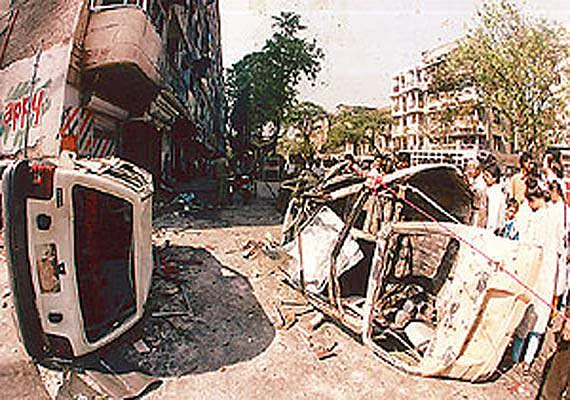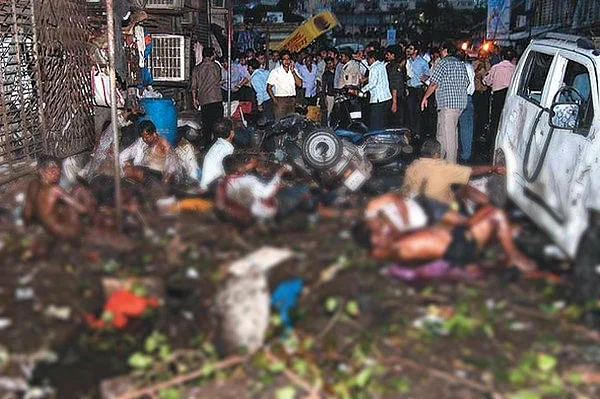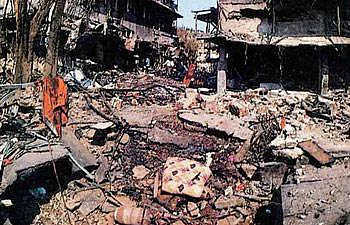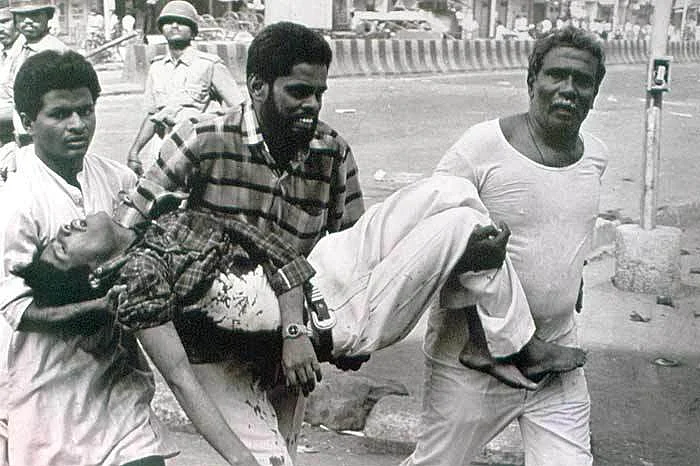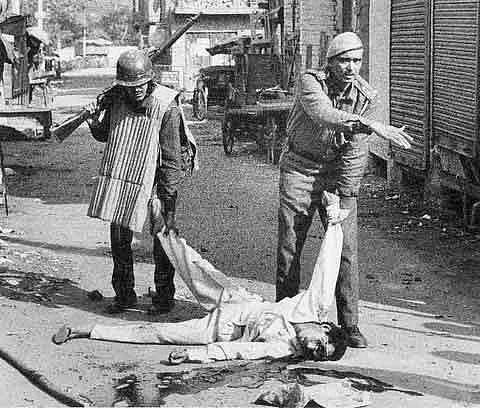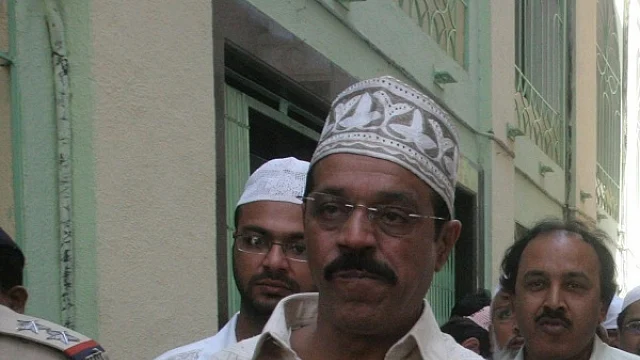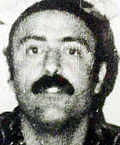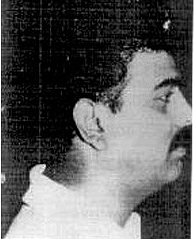(This story was first published on 30 May 2017 and is being republished from The Quint’s archives to mark the anniversary of the 1993 Mumbai bombings)
On 12 March, a series of bomb blasts rocked several parts of Mumbai, killing over 250 people and injuring nearly 700 others. The explosions were called the largest coordinated terror attack to be conducted on Indian soil. It was also the first terror attack in which RDX was used as an explosive.
The first bomb went off at around 1:30 pm in the basement of the Bombay Stock Exchange (BSE). In the next few hours, bombs went off in the Fisherman’s Colony in Mahim causeway, the Air India Building, Zaveri Bazaar, Hotel Juhu Centaur, Plaza Cinema, Hotel Sea Rock, Century Bazaar, Katha Bazaar, Worli and the Passport office.
So what had happened? Who were the people involved? Why was Sanjay Dutt’s name drawn into it?
Here is all you need to know about the blasts that rocked Mumbai.
The Coordinated Terror Attack
On 12 March 1993, the first large-scale, coordinated terror attack in the world took place in Mumbai, then known as Bombay.
Between 1:29 pm and 3:40 pm on that Black Friday, a series of 12 well-planned bomb blasts ripped through iconic, commercial and crowded spots across the city.
- 01/03Scenes from Black Friday, 12 March 1993. (Photo courtesy: Twitter/Yogesh Singh)

- 02/03Scenes from Black Friday, 12 March 1993. (Photo courtesy: Twitter/Yogesh Singh)

- 03/03Scenes from Black Friday, 12 March 1993. (Photo courtesy: Twitter/Yogesh Singh)

On 16 June, a special court delivered its final set of verdicts against seven accused, including mafia don Abu Salem, 24 years after the bombing.
Why Did the Bomb Blasts Happen?
The serial blasts were a conspiracy by Mumbai’s underworld kingpin Dawood Ibrahim to set off a fresh round of violence against the Hindu community. The plan was also to ship consignments of RDX, AK-56 rifles and hand-grenades into the city, to build bombs and arm petty criminals.
- 01/03Scenes from the Bombay riots. (Photo courtesy: Kractivist’s Blog)

- 02/03Fire rages on at Century Bazaar, Worli. (Photo courtesy: metrognome.com)

- 03/03Policemen drag the body of a victim during the Bombay riots. (Photo courtesy: Naukrinama.com)

What Happened on Black Friday?
On 12 March, twelve bombs exploded within a span of two hours and ten minutes, bringing Mumbai to a bloody stop.
International, urban terrorism had come rampaging through the city in a form and scale never seen before.
Over 3,000 kilograms of RDX had landed in India prior to the bombing. Only 10 percent of it was reportedly used to make bombs, which were strapped onto scooters, buried into cavities created in cars, and hidden in suitcases abandoned in public areas and landmark buildings.
They were all activated by a timer within fifteen to thirty minutes of each other. If the locations and sequence of the blasts are mapped out, they follow a south-north trajectory: starting with a car exploding in the basement of Bombay Stock Exchange in Mumbai’s Fort area and ending with unexploded grenades being hurled at the runways of the airport in the northwest suburb of Santacruz.
On that day, 257 people died and over 1,400 were injured, and property worth Rs 28 crore was damaged. A report in India Today from 31 March 1993 narrates:
Two days after Black Friday, the tally of deaths had crossed 300 with 1,500 injured, many of them critically. In addition, an unestimated number, the police believe, were simply vapourised in explosions powerful enough to tear through four levels of concrete flooring, reduce a double-decker bus to the size of a mangled Maruti, fling people and debris more than a hundred feet away, and shatter window panes at four times that distance.
Who Was Behind the Mumbai Blasts?
The attacks were planned by India’s most wanted crimimal, Dawood Ibrahim, who at the time was the leader of the self-styled D-Company. His younger brother Anees Ibrahim played a crucial role in planning the landing of RDX onto India’s shores. Dawood was aided by his trusted associate, Tiger Memon. Tiger’s younger brother Yakub obtained air tickets for all of the main accused to fly out to Dubai and Pakistan.
Investigations into the money trail that funded the explosions led to Pakistan’s spy agency, the Inter-Services Intelligence. In 2013, the Supreme Court of India slammed the ISI for “training and supporting” dozens of people who were part of the conspiracy. Nearly all of them were recruited in Dubai and Pakistan. A few Indian customs officials and policemen were also held responsible for allowing RDX and arms consignments into the city for hefty bribes.
How Is Sanjay Dutt Involved?
During the probe, the police discovered that Anees Ibrahim had given AK-56s to actor Sanjay Dutt. They claimed they found phone records showing regular communication between the two, especially calls made from Dutt’s house to Dawood’s Dubai residence, ironically called the ‘White House’. Accused Abu Salem and Riyaz Siddiqui confessed to delivering one of the many smuggled consignments to Dutt’s house.
Dutt was arrested in April 1993 and confessed to receiving a consignment with three AK-56 rifles, nine magazines, 450 cartridges, a 9mm pistol and over 20 hand grenades. In his defense, he claimed ignorance about the bomb blasts. He confessed that he asked Anees for the guns to protect his family after receiving threats during the preceding riots. He claimed to have gotten the weapons destroyed when he had a bad feeling about it, saving a rifle for himself.
After the several rounds of jail and getting out on bail, in 2006, the TADA court sentenced him to six years in prison under the Arms Act but acquitted him of all terrorism-related charges. He appealed, but the Supreme Court upheld the verdict in 2013. The actor walked out after serving his sentence in February 2016.
How Did Police Crack the Case?
The Mumbai Police was lauded for cracking the case within 48 hours.
An over 150-member team of the Mumbai police force was set up under the command of Rakesh Maria, the then Deputy Commissioner of Police. On the day of the blasts, the police found an abandoned scooter in Mahim with RDX which did not explode and a Maruti van packed with grenades and weapons. The van was registered in the name of a Rubina Memon, who lived in Mahim. On reaching her address, the police found it locked. They had left India two days prior to the bombings.
Inside the house, Maria found a key that matched the unexploded scooter, which helped him zero in on the Memons: Abdul Razak Memon and his five sons, Tiger, Yakub, Suleiman, Essa, Yusuf and Ayub. Tiger, the oldest son, was a smuggler and henchman for Dawood.
The police searched the country, hauling in suspects that matched a pattern based on previous intelligence reports of weapon consignments coming to India, which they had received but ignored. Finally, two suspects turned approvers and confessed minute details of the planning. They walked free in 2007.
Could Black Friday Have Been Prevented?
The original plan was to bomb the city on Shiv Jayanti in April 1993. Nineteen men were identified by Tiger Memon and sent to Pakistan for training in the use of arms and bomb-making. One of them was Gul Mohammad Sheikh alias Gullu. On 9 March, Gullu was picked up for rioting. Spooked, he spilt the beans before the Mumbai police.
Gullu confessed to his training in Pakistan and spoke about a conspiracy underway to bomb major locations around the city, including the Bombay Stock Exchange, Sahar Airport and the Shiv Sena Bhavan. The police infamously laughed his confession off and dismissed his claims. Gul Mohammad’s arrest, however, spurred Tiger Memon to advance the date of the blasts to 12 March.
A Note on the Convictions So Far & Yakub Memon
The primary chargesheet in the case was filed in 1994. Six years later, the Terrorism and Disruption Activities Act (TADA) court convicted 100 people, including Sanjay Dutt. Of them, twelve were awarded the death sentence and twenty were sentenced to life. Twenty-nine were acquitted.
Yakub Memon, who’d fled to Pakistan along with his brother Tiger and the rest of the family, was executed on 30 July 2015 after several failed mercy petitions. He was found guilty of securing international escape routes for many of the accused to flee after the blasts.
As per Indian agencies, he was nabbed at the Kathmandu airport in 1994. However, these claims have been contested by individual investigators who were part of the operation. They claim that Yakub Memon wanted to turn approver in exchange for nailing Pakistan ISI’s role in the Mumbai serial blasts.
His execution reignited the moral debate over capital punishment in India.
Convicted in 2017
In June this year, a special court pronounced six accused guilty in the blasts. Qayyum Shaikh – who was charged with delivering weapons to actor Sanjay Dutt – was acquitted for lack of evidence after spending 11 years in jail. The 16 June verdict will take into account the statements recorded of 129 suspects, and the testimonies of 736 witnesses. Here are the charges facing the six:
- Abu Salem: Extradited from Portugal, he is accused of transporting and distributing arms and ammunitions
- Mustafa Dossa: Extradited from the United Arab Emirates, he is facing charges of landing arms and explosives, conspiracy, and sending individuals to Pakistan for their training
- Tahir Merchant: Charged with arranging for the other convicts to travel to Pakistan
- Riyaz Siddiqui: Facing charges of transporting explosives in a Maruti van which were later used in the blasts
- Firoz Abdul Rashid Khan: Charged with being present when arms and ammunitions were transported to Mumbai
- Karimullah Sheikh: Charged with smuggling arms into the country through the Shekhadi coast of Raigad district in February 1993
- 01/03Accused Mustafa Dossa died in jail two weeks after the 16 June 2017 verdict. (Photo courtesy: DNA)

- 02/03Accused Tahir Merchant (Photo courtesy: Madhyamam)

- 03/03Accused Feroz Abdul Rashid Khan (Photo courtesy: Spy Eye Blog)


